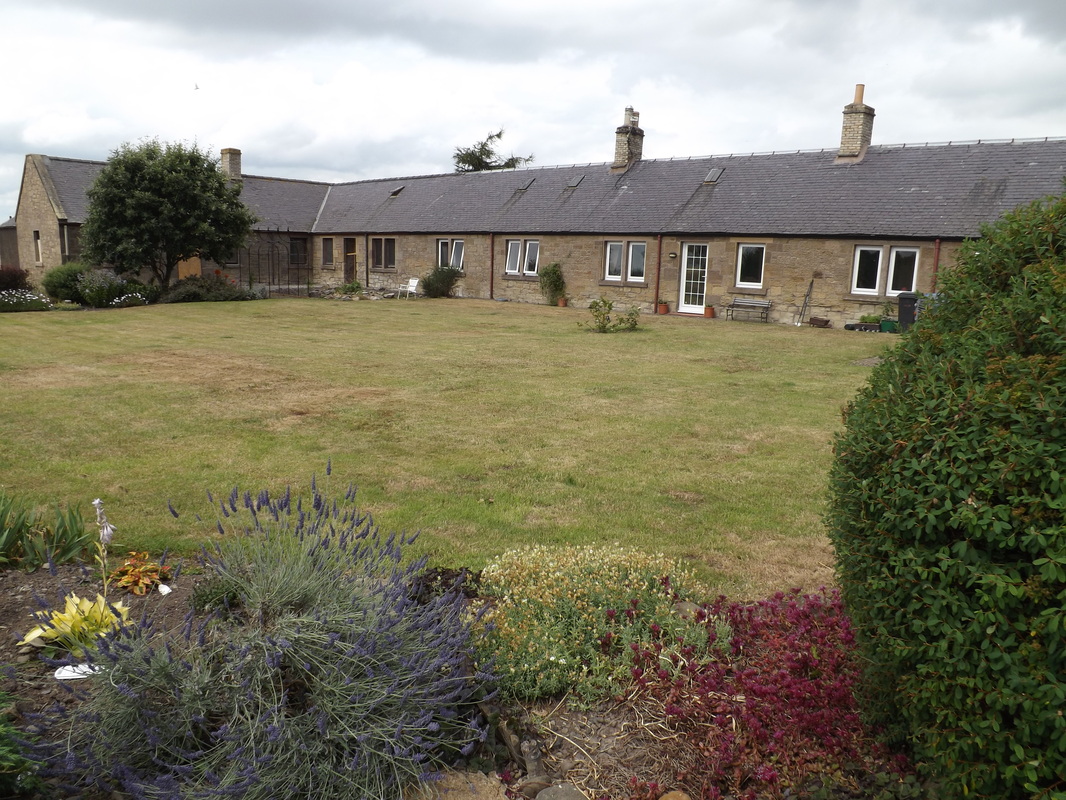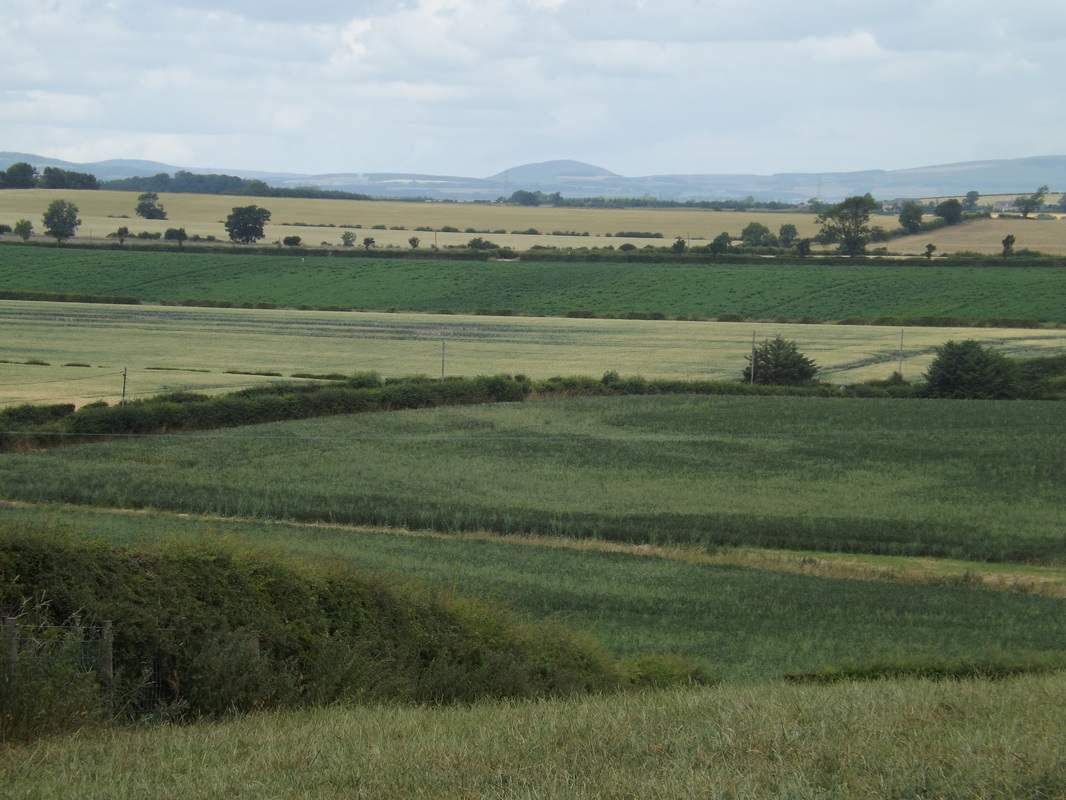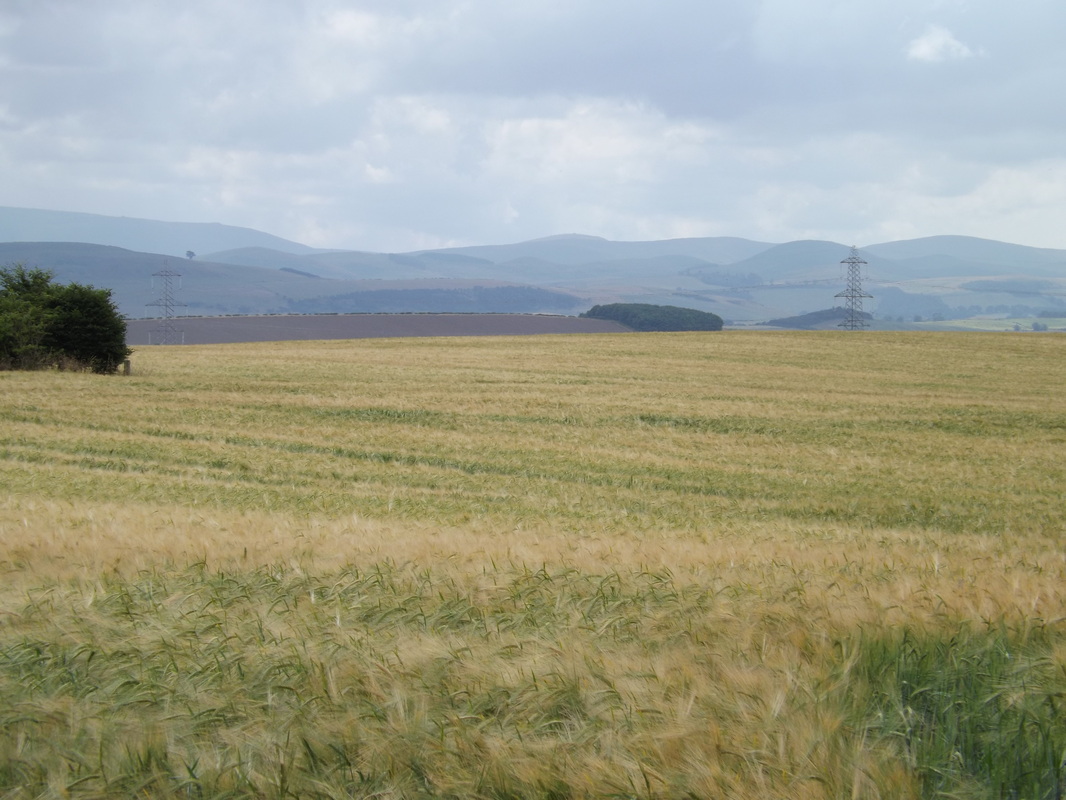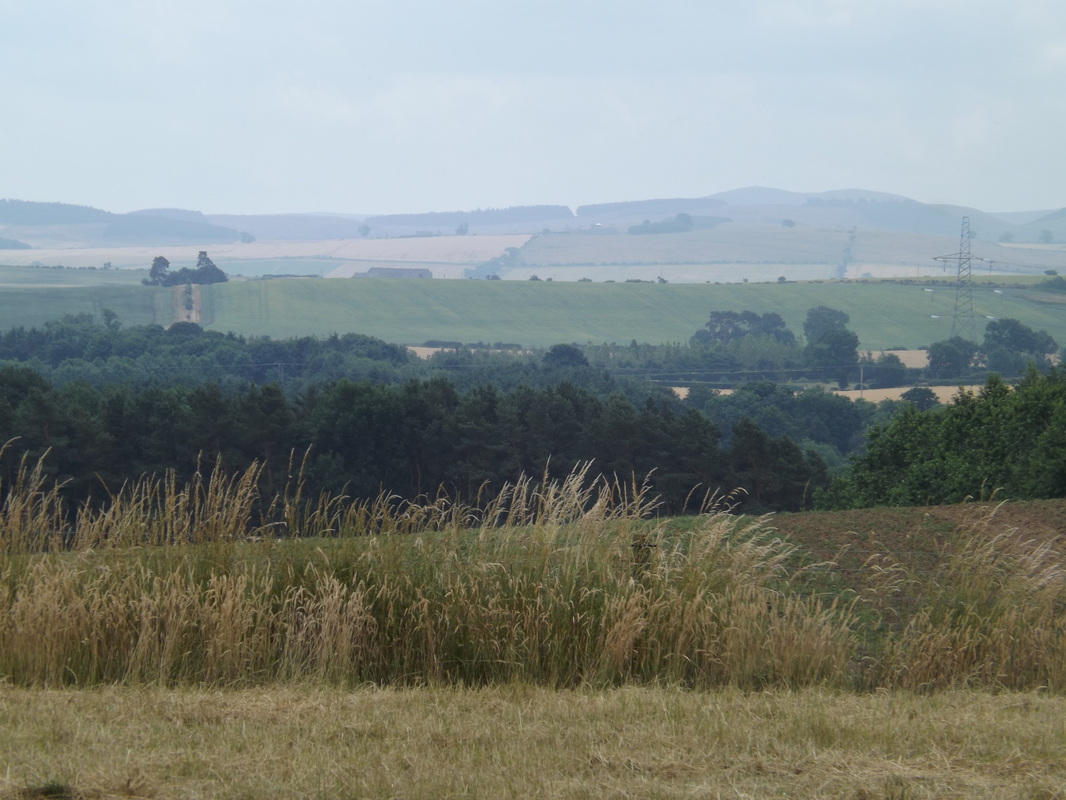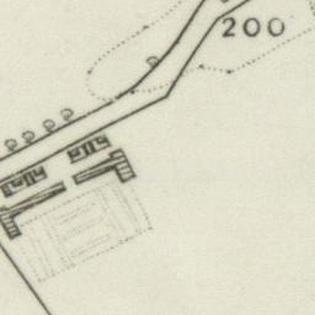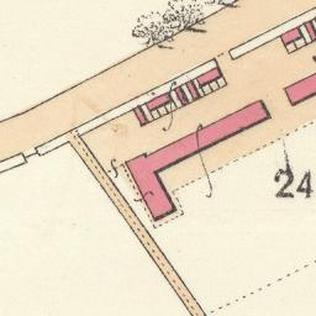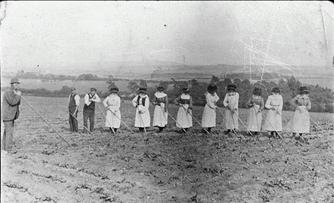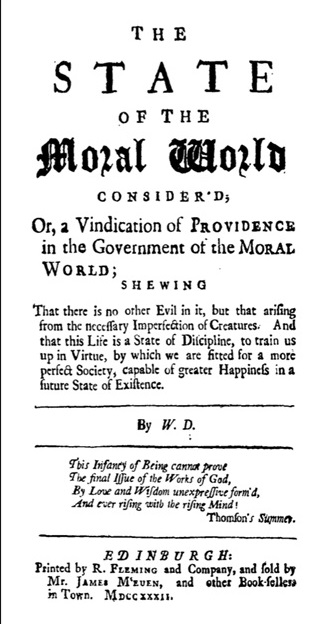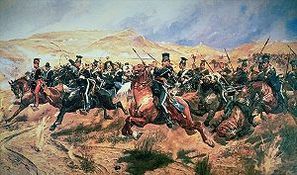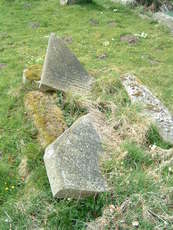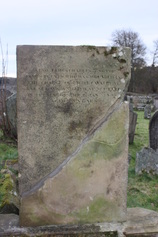IntroductionThis blog was initially intended to be on the subject of Lennelhill Farm, Coldstream - "The Place", and its connections with various families and people of note through the centuries. However, the research process has revealed some intriguing facts and unexpected family links that simply cannot be given the justice they deserve in one blog! Therefore, this topic is being broken down into instalments, but as it still remains largely untouched in the following articles, my research notes, pedigrees of the families concerned & other interesting 'bits and pieces' are contained in the book "Border Ramblings" which I am currently in the process of writing. This is designed to support all the posts that appear on the Borders Ancestry Blog and will, I hope, prove a useful resource to those of you researching 'people and places' in Northumberland and the Scottish Borders. Part I - The Place, A Philosopher, The Potato & A PrivateSituated on a ridge 63m above sea level facing South East, Lennelhill with its excellent visibility and proximity to the River Tweed would have been a natural and strategic choice for a settlement. There is no doubt that the Farm or Settlement at Lennelhill is of great antiquity from the discovery of two burial cists disturbed during ploughing, one was empty, the other contained the partial remains of three burials. Bob & I moved to Lennelhill Cottages in April 2012 and when the opportunity came to purchase the adjoining property later that year we jumped at the chance. Renovation work began in early 2013, stripping back the walls and digging up the floors. This revealed some startling evidence as to the former life of these cottages that the "Time Team" would be proud of. Fascinated by these revelations I turned "house detective". My findings are not unique and can most probably be applied to most of the rows of single storey farm cottages in the area built in the early 19th century. Nonetheless, they form an interesting part of the Farm's social history and have their own story to tell.. We knew that our block had originally been three cottages from the numbering, we are number 4, and the adjoining cottage is number 6. When our Architect drew up the initial set of floor plans this was plain to see. Three cottages consisting of four rooms, with later extensions serving as kitchens. As the excavations progressed the cottage began to reveal it's hidden past - doorsteps, heavily worn, under windows - fireplaces where there are no longer chimneys etc. It was obvious this hadn't been three cottages but six! Six cottages of two rooms, one room with a fireplace and a boarded attic space to each cottage to provide additional sleeping space. The 6" Map above left shows both blocks of cottages, ours on the left with outbuildings and clearly defined strips that would have been workers plots, most likely for vegetables. The 25" Map above right, of the same date shows the outbuildings in more detail. Six have open yards, one for each cottage. An educated guess tells me these could be stalls for a cow or pigsties. Keep for a cow was included as part of the Hind's wages & the pig being quick maturing, eating scraps and slops, then cured, salted and wrapped would provide meat for the cottage occupants over several months. The other three buildings may be outside 'privies'? I would love to hear your thoughts and comments on the above interpretation. The People |
| The earliest tenant I have come across to date is a Mr William Dudgeon, tenant at Lennelhill during the late 1720's to the mid 1730's, with three children baptised from 1728-1731. The Oxford DNB has his date of Birth as 1705/6 and his date and place of death as Upsettlington in 1743 aged 37 from consumption. A further four baptism records from the Ladykirk Parish Register 1733 - 1737 list William as "in Upsettlington" , in the neighouring Parish of Ladykirk, with wife Betty Bell. His first major work published in 1732 (see left) was the subject of much controversy and lead to his prosecution on the grounds "he was an author of a work that contains many gross errors subversive of Christianity", (DNB) in other words he blamed God for all the evil in the world. |
William went on to publish other works before his death in 1743 that did not go unnoticed either, indeed they appear to have had a far reaching effect on both sides of the Border.
Little appears to be known about his family which I feel is deserving of further research. One interesting point of note is the marriage of a Mary Dudgeon to a Robert Swine, Longformacus, Berwickshire in 1749.
The Potato
In the Clock & Watch tax return of 1797/98 David Hogarth has taken over the tenancy of the Farm following the demise of his father and is paying tax on a gold watch of 11 shillings 3 pence. There were a total of 15 gold watches in the Parish of Coldstream, 11 belonging to the 'Earls & Esquires', 1 to a stone mason, 1 to the above David Hogarth and the remaining 2 the property of his cousin David at Fireburn Mill. The only tenant farmers in the parish in possession of such an item! Were these watches remnants from a more illustrious past?
It is George's third son Robert (1744-1819), tenant from circa 1769 in the farm of Carfrae on the upland border of Western Berwickshire, that is credited with the introduction of the potato to the region in 1780. This, as the following extract from Statistical Account of 1794 testifies was only one of his many achievements:-
— " Agriculture has made wonderful progress within these last twenty years in this parish. This has been chiefly owing to the skill and attention of one individual, Mr Robert Hogarth, tenant in Carfrae. He came twenty-five years ago from East Berwick- shire. At this period our farmers were total strangers to the turnip, and very little acquainted with the lime and sown- grass system. He introduced turnip and clover, and suc- ceeded. It is now very general to grow turnips, and in no part of Berwickshire is it in greater quantity, or of better quality, on the same extent of land. He also introduced the white-faced, long-wooled sheep from Northumberland, and they promise to answer well." Mr Hogarth is also credited with the introduction of the potato into the district, but this was later, about 1780. Bruce, in his Appendix to Lowe's Agriculture of Berwickshire (July 1794), notes that Robert Hogarth, in Carfrae, " has made astonishing changes upon a large tract of very high wild country."
The Private
James Charles Purves was born at Lennelhill and baptised in June 1827. In 1850 he joined the Cavalry, the 11th Hussars (Prince Albert's Own). On 25th October 1854 Private Purves was present at the Battle of Balaclava when the misinterpreted order was received from Lord Raglan to capture (rather than prevent the removal of) the Russian Guns at the end of the Valley to the North of Causeway Heights.
What happened next has been immortalised in many paintings, the poem by Alfred Lord Tennyson and by the pen of Private Purves in a letter home to his brother following the receipt of a wound to his leg which would later prove fatal. He describes the Battle as a "disastrous affair for the poor Light Cavalry" but his initial feelings of a young man with his "blood up" is clear from the following excerpt from the same letter:-
"Off we went tearing towards destruction. The round shot came first; one most wonderfully came past my shoulder striking my rear rank man right in the chest. Onwards we went. I could see the shell bursting over our heads and hear the grape and canister hissing through us. But I felt or feared nothing - a sort of wildness came over me and I seemed to care not. . |
Onwards still. The guns were silenced and the Russians would not stand our charge. We cut down the gunners and literally took the whole lot. ‘Hurrah my boys’ sung out our brave Colonel Douglas ‘Lets give them another Charge and we’ll take the guns home with us’. I found myself as excited as possible singing out ‘Come on boys’".......
......... I was quite chuckling to myself when I got a rap on my leg as if from a sledgehammer. I looked down and saw blood gushing from a good sized hole. ‘Now then old horse’ I says ‘Save my life now!’
To conclude this chapter...
We are back to Mr William Nicholson tenant from 1835 to 1864, and for those "Smiths" out there who are curious as to the connection. William was brother in law to 1st cousin 4x removed Phillis Smith through her marriage to wait for it - a Middleton!!
Thoroughly enjoy reading your blog and looking forward to the day when you research our great-grandparents on the Watson side. You have a certain knack of making history lively and interesting, too.
Thanks for your comments Odette, very kind as always! Re Watsons - I'm waiting for you to come and visit so we can go "on tour" together ;-)
Hey, I may be making that visit across the pond within the next year or two. I will look forward to meeting you and wonder what similarities we may discover.
Fascinating research Susie. Really enjoyed this article. Looking forward to August's blog :-)
I used to find history rather boring when I was at school - admittedly this was a long time ago! However if I had had the opportunity to have history lessons from someone like you I really would have enjoyed the subject and eventually and probably achieved a much higher 'O' level grade as a result! Keep researching!!
Really good stuff as usual. Like others, am interested to hear about the Smith's of Norham!
Susie
I have quite a bit of information on the Purves's and the Clays.
I am quite willing to share.
I much admired your detailed research into Lennel Hill. My 6 x GGrandfather Alexander Drysdale and his wife with assorted family are buried in the old churchyard. He is listed as "Tenant at Lennelhill" at his death in 1755 on the inscription. I was wondering if you'd come across him in your research? He was previously tenant at Hawkslaw near Leitholm.
Leave a Reply.
Author
Susie Douglas
Archives
August 2022
July 2022
June 2022
May 2022
April 2022
March 2022
February 2022
January 2022
December 2021
November 2021
October 2021
September 2021
August 2021
July 2021
June 2021
May 2021
April 2021
March 2021
February 2021
January 2021
December 2020
November 2020
October 2020
September 2020
August 2020
July 2020
June 2020
May 2020
April 2020
March 2020
February 2020
January 2020
December 2019
November 2019
October 2019
September 2019
August 2019
July 2019
June 2019
May 2019
April 2019
March 2019
February 2019
January 2019
December 2018
November 2018
October 2018
September 2018
August 2018
July 2018
June 2018
May 2018
April 2018
March 2018
February 2018
January 2018
December 2017
November 2017
October 2017
September 2017
August 2017
July 2017
June 2017
May 2017
April 2017
March 2017
February 2017
January 2017
December 2016
November 2016
October 2016
September 2016
August 2016
July 2016
June 2016
May 2016
April 2016
March 2016
February 2016
January 2016
December 2015
November 2015
October 2015
September 2015
August 2015
July 2015
June 2015
May 2015
April 2015
March 2015
February 2015
January 2015
December 2014
November 2014
October 2014
September 2014
August 2014
July 2014
June 2014
May 2014
April 2014
March 2014
February 2014
January 2014
December 2013
November 2013
October 2013
September 2013
August 2013
July 2013
June 2013
May 2013
April 2013
March 2013
February 2013
